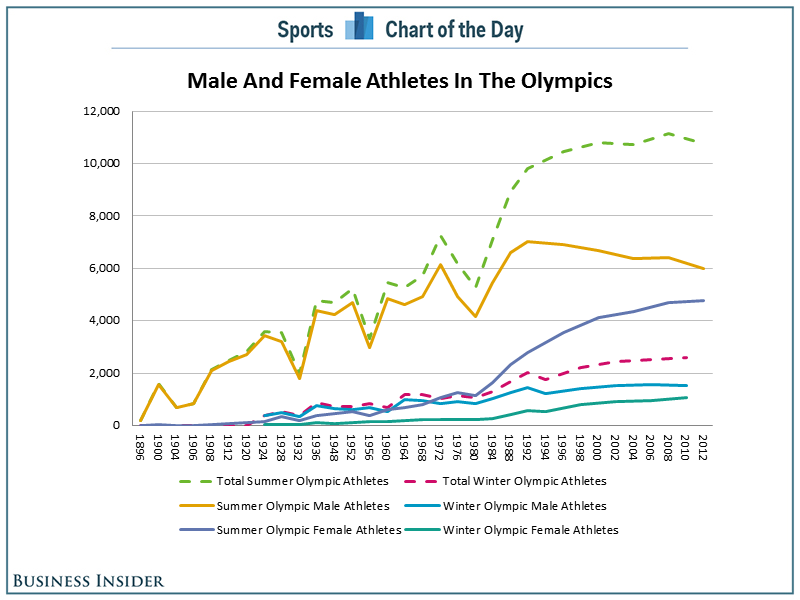finarashi wrote:.. and your approach has the unfortunate problem of increasing the numebr of athletes. The stated big problem in modern Olympics is that they are already too big. Too many sports, too many events, too many athletes.
When you state that the number of athletes shouldl be increased you echo all and every sport, every NOC etc. Everybody wants the number of athletes increaseD as number of athletes is more prestige in sports.
Unfortunately the OC wants smaller games with less sports events and athletes.
Number of event days has nothing to do with costs as one could easily have Judo done in less days loook at any big event and how many fights you can have at one mat.
Agree that every NOC wants more athletes/events and air time.
Unfortunately, I’m having a hard time grasping the notion that every “OC wants smaller games with less sports events and athletes.” And struggling to understand the idea that the “Number of event days has nothing to do with...” justification of proposal. Granted it's quite a paradym shift, and likely problematic for other reasons, but from what I've been able to find via Google today:
In October and November 2004, the IOC established an Olympic Programme Commission, which was tasked with reviewing the sports on the Olympic program and all non-Olympic recognized sports. The goal was to apply a systematic approach to establishing the Olympic program for each celebration of the Games. The commission formulated seven criteria to judge whether a sport should be included on the Olympic program. These criteria are history and tradition of the sport, universality, popularity of the sport, image, athletes' health, development of the International Federation that governs the sport, and costs of holding the sport.
The 114th IOC Session, in 2002, limited the Summer Games program to a maximum of 28 sports, 301 events, and 10,500 athletes.
The IOC has put a limit of 28 sports in the Summer Olympics, therefore no further sports may be added unless existing sports are removed.
In order for a sport or discipline to be considered for inclusion in the list of Summer Olympics sports, it must be widely practiced in at least 75 countries, spread over four continents.
Sports come in and out of vogue around the world over time, and in order to continue to be relevant to the world of sport, the Olympic Games needs to adapt with these changes.
Of course there is a limit to what can be included, and there are specific rules in place for including new sports.
Under the rules of the Olympic Charter, the IOC Executive Board are able to add new disciplines to existing sports without needing the approval of the full membership. Although many sports were looking at adding extra events to their program, in mid 2013 the Executive Board decided not to include any more events on the program for 2016. Sports which had applied to add new disciplines for Rio 2016 included basketball (3x3 event), cycling (a points race, BMX freestyle and mountain bike eliminator events), triathlon (mixed relay); and judo (team event).
The new system consists of 25 core sports with three “floating” sports. This new system will start from the Olympics from 2020. However, it is not all good news, as all sports would be up for review after each Olympics. New sports will be included or others dropped by a simple majority vote (compared to currently requiring a 2/3’s majority).
There needs to be exceptional circumstances for a core sport to be dropped from the program, such as a drug scandal, corruption or a massive drop in popularity. There were 28 different sports on the program for the Beijing Games, which reduced to 26 for London when Baseball and Softball were dropped from the program. In 2013, wrestling was dropped from the sports list (but reinstated later).
Cost Controversy: One criticism is that the Games are funded by host cities and national governments; the IOC incurs none of the cost, yet controls all the rights and profits from the Olympic symbols. The IOC also takes a percentage of all sponsorship and broadcast income. Host cities continue to compete ardently for the right to host the Games, even though there is no certainty that they will earn back their investments. Research has shown that trade is around 30 percent higher for countries that have hosted the Olympics.
Summer Olympic CONSTRAINTS are expected to include approximately 10,500 athletes to take part in 301 events on their programs over 14-15 days across 32-34 competition venues. Equates to ~34.8 athletes (+/-) per medal event. Equates to 9-10 events per competition venue, or 22 events awarded per day.
Athletics (track & Field): 2,000 athletes, 47 medal events. Equates to ~42.5 athletes per event over 10 Days of Competition.
Swimming: 950 Athletes, 32 Events. Equates to 29.7 athletes per event over 8 Days of Competition.
Basketball 2 Medal events, Athletes: 288 (144 men, 144 women, 12 teams in each event). Equates to 144 athletes per event over 12 Days of Competition.
Soccer: 2 Medal events, Athletes: 504 (288 men, 216 women; 16 men’s teams and 12 women’s teams) over 14 Days of Competition.
POINT being if JUDO can demonstrate the willingness and ability to have more athletes compete in the same or less number of days (than before, or other sports) so be it... More bang for the buck. There are no additional costs to the IOC, host nation, the IJF or anybody other than the NOC’s who are willing to bring more athletes.





 on both counts... just getting back on keyboard...
on both counts... just getting back on keyboard... 


